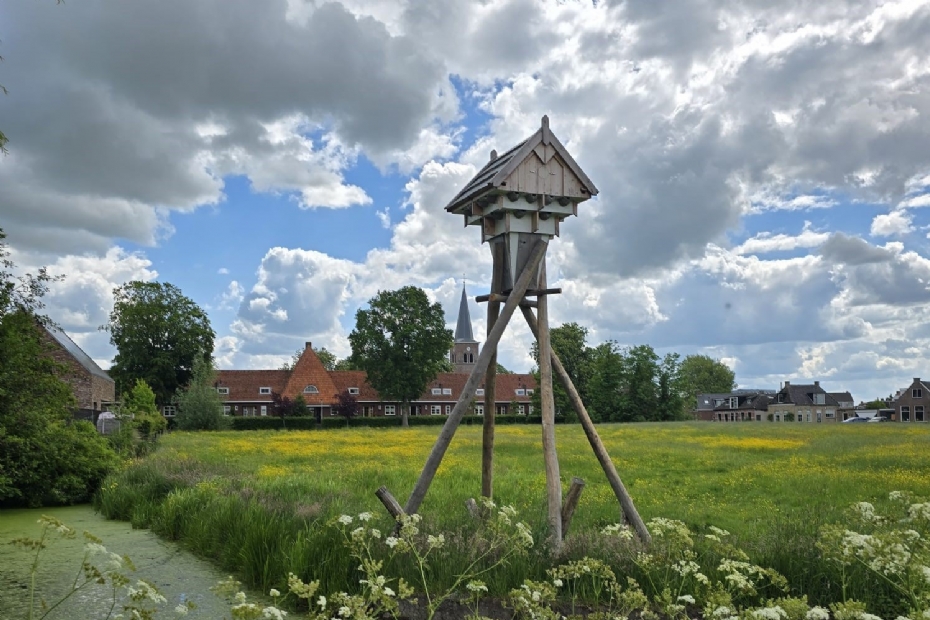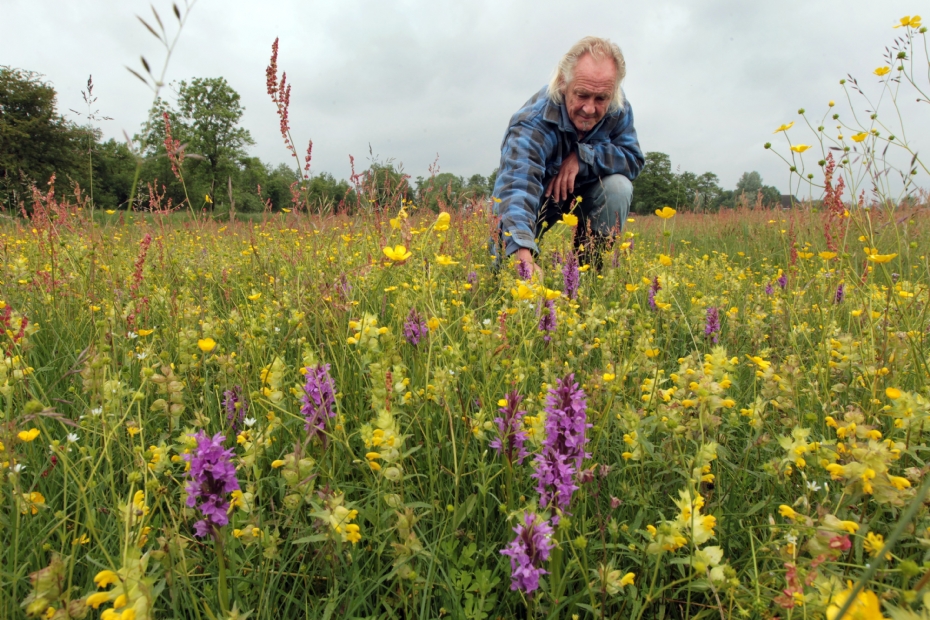Piling up reports doesn't help anyone - least of all nature |
|
|
|
|
 |
| 202 sec |
Nico Minnema: rebel with a cause
The Flora and Fauna Act focuses too much on the protection of the individual, which leads ecologists and officials to spend too much time producing reports, exemptions, and permits. Unfortunately, this work has partly turned into a copy-and-paste exercise and a money-making model. In the long run, this is far from a sustainable solution for any species.
| According to Nico Minnema, nature benefits more from generalists than from specialists. |
"Nature benefits much more from a practical approach." That's the first thing ecological consultant Nico Minnema of Successie Natuurzaken - Consultancy/Nature & Ecology tells me. The editorial team visited Minnema in his "nature skybox" near the Frisian village of Earnewâld. He realizes that such an opening may stir things up, but he believes in a goal-oriented approach. His consultancy, as he describes it, takes a fresh and slightly rebellious view and aims to make the application of the Flora and Fauna Act more practical and credible — an approach he also applies in his field projects.
Pushing boundaries
"Because of nature conservation laws, far too much energy goes into administrative accountability in projects," argues the 69-year-old Frisian. "I like to push the limits. As ecologists, we should focus more on achieving better results in the field. Thinking and acting more in terms of populations — that's my approach. We currently waste a lot of time and money on expensive reports, additional studies, exemptions, permits, and enforcement. Meanwhile, clients lose valuable time that doesn't benefit nature. It alienates both clients and citizens from nature and ecology in general. What they once enjoyed now becomes an obstacle, causing delays and extra costs. During construction and demolition projects, clever people make sure that all cracks and crevices are sealed or disguised. Traces of building-dwelling species are cleared away before an ecologist is consulted. In this way, the result is the exact opposite of what was intended."
Ecological quick scan
"Don't get me wrong," Minnema continues, "I'm happy with the Flora and Fauna Act. But its application can be more efficient — for both the species and for maintaining public support for nature. We work based on the law's intent and attach great value to public engagement. Currently, reports fail to account for one of the key elements of a species' functional living environment: people. This is especially true in construction and demolition projects involving building-dwelling species. You can conduct as many studies as you want, issue as many exemptions, permits, or compensation measures as you like, but if the owner or resident doesn't feel heard, there's a good chance that the species in question will never use the measures provided."
|
|
"The report could, so to speak, fit on a single sheet of paper."
| |
|
According to Minnema, field visits and ecological quick scans are always worthwhile. "That way, you put energy into finding solutions rather than getting stuck in local legal constraints. When in doubt, assume animals may be present and come up with physical solutions in the field. Ensure that alternative habitats are created well before construction starts — for example, in the form of an eco-building or an 'Ecotil,' which I developed. Of course, an individual animal may be lost during the work, but we try to prevent that by providing ecological supervision and working outside vulnerable periods. The report could, figuratively speaking, fit on one A4 page. Also involve the residents and project initiators, emphasizing the importance of species preservation. In the long run, this yields more benefits for nature. There is a risk that an individual animal may perish — but that risk also exists under the formal application of the law."
Ecotil
Building-dwelling animal species traditionally use voids and cavities in older buildings. In modern sustainable construction, however, these spaces have disappeared and every crack is sealed. To address this, Minnema developed three types of Ecotil, inspired by the dovecote and swallow tower. The Ecotil is a cluster of hollow spaces suitable for various birds, bats, and insects. For birds, it offers 30 to 50 cavities with different entrance openings.
 | | Ecotil rural version suitable for all building-dwelling species |
|
|
Nature development
The consultancy Natuur & Ecologie also focuses on nature development. How does Minnema approach such a project? He smiles: "That too can be done faster and more efficiently. But even here, well-intentioned legislation can be time-consuming and costly. When dealing with relatively small projects, you can take a more pragmatic approach — preferably with local contractors on a flexible, ongoing basis. Determine the next steps weekly and, of course, make sure to work outside the vulnerable periods of potentially present species. When you work step by step, an individual animal may still perish occasionally, but by not working everywhere in the area at once, you give local fauna the opportunity to relocate."
In practice
Theoretically, it all sounds great, but I suspect this approach sometimes clashes with legal requirements. What happens when inspectors show up? Minnema: "I try to convince them of the added value of this approach. That only works if you take it seriously — with commitment and expertise. The method is determined by the field. Of course, no nesting birds are disturbed, and the contractor retains their own responsibility. Sometimes the province supports my ideas, but occasionally they cause panic among the authorities. I understand that officials can't always endorse my vision. I have the freedom to make my own choices; they don't always have that."
 | | Nico Minnema in already converted rushland |
|
|
Passionate nature developer
Nico Minnema (69) has been a vegetarian for over 50 years. As far as he can remember, he has never deliberately killed an animal — not even by accident. He studied green management, landscape maintenance, and recreation in Frederiksoord. In 1977, he started his own ecological landscaping company under the name "Pee Pastinakel," inspired by the Ecocathedral project of Dutch landscape architect Louis le Roy in Heerenveen. From 1985, he served as regional head for the central and northern districts at It Fryske Gea until 2007, when he founded the consultancy Successie Natuurzaken en Dynamiek Beheertaken. The firm is active in consulting, preparation, and execution in the fields of nature development, nature management, and regenerative agriculture.
|
This article was originally published on September 29, 2025, on the website](https://www.stad-en-groen.nl/article/51229/rapporten-stapelen-daar-schiet-niemand-wat-mee-op---en-de-natuur-al-helemaal-niet.]website) of Stad + Groen.
| Successie Natuurzaken - A... | |
| |
| LOG IN
with your email address to respond.
|
|
|
| There are no comments yet. |
|
| |
Anyone can place small ads for free through their own account.
Place a free ad
|
|
|
|